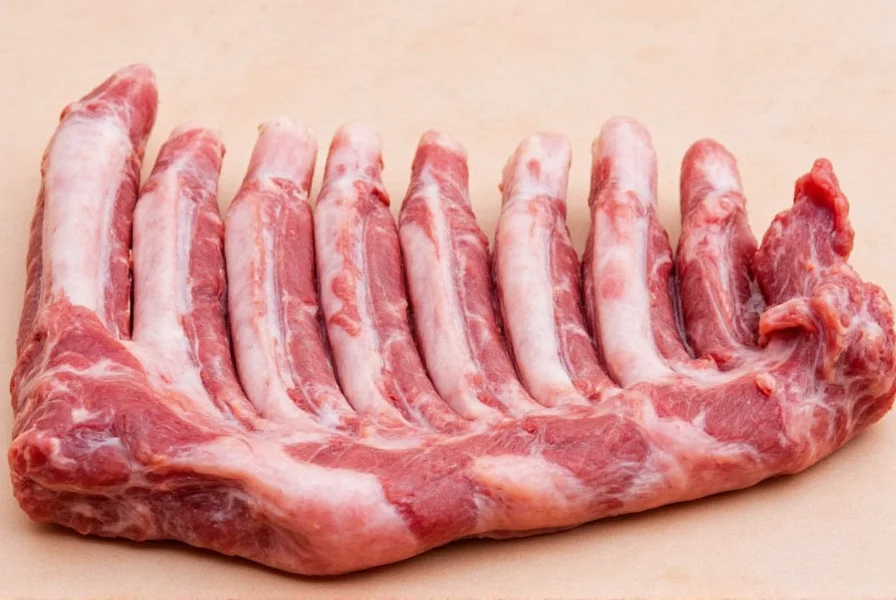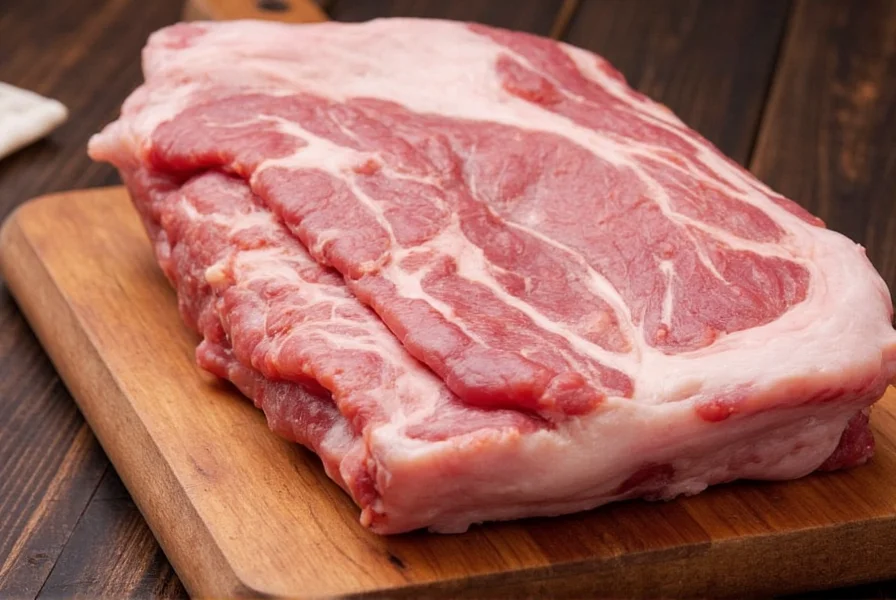Why Rib Count Confusion Leads to Barbecue Disasters
Imagine hosting a summer cookout, confidently ordering "one rack" for six guests, only to discover it contains just 7 ribs—leaving half your table hungry. This common frustration stems from inconsistent industry terminology. Butchers, retailers, and recipes rarely specify exact rib counts, causing portioning errors, wasted money, and ruined meals. Understanding the variables behind rib numbers transforms guesswork into precision.
The Reality Behind Pork Rack Variability
Contrary to popular belief, no universal rib count exists. The USDA nutrient database confirms pork rib cuts exist but doesn't standardize counts, leaving room for butchering variations. Thicker spare ribs yield fewer bones per rack than leaner baby backs. Even "full rack" labels mislead—some suppliers sell "cheater racks" with only 4–5 ribs. This isn't deception; it reflects biological diversity in pig anatomy and regional processing standards.
| Pork Rib Cut Type | Standard Rib Count | Typical Serving Size | Source Verification |
|---|---|---|---|
| Full Rack (Baby Back) | 8–13 ribs | 2–3 people | SmokedBBQSource |
| Full Rack (Spare Ribs) | 7–11 ribs | 3–4 people | SmokedBBQSource |
| Half Rack | 6–8 ribs | 1–2 people | Campo Grande |
| St. Louis Style | ~3 ribs | 2–3 people | SmokedBBQSource |
| Cheater Rack | 4–5 ribs | 1 person | SmokedBBQSource |

When to Use (or Avoid) Specific Rib Counts
Use full racks (10–13 ribs) for large gatherings where visual presentation matters—like holiday roasts or competitive BBQ. The intact curvature creates an impressive centerpiece. Avoid them for weeknight dinners; they require 4–6 hours of cooking time and generate excess portions.
Opt for half racks (6–8 ribs) when portion control is critical—such as meal prep or diet-conscious cooking. They cook 30% faster and minimize waste. Avoid half racks for catering; uneven butchering often results in mismatched bone lengths that look unprofessional.
Never rely solely on "rack" terminology when ordering online. E-commerce listings frequently mislabel cheater racks (4–5 ribs) as full racks. Always confirm the exact rib count and weight (e.g., 2.5–3 lbs for standard baby backs).
Your Foolproof Buying Strategy
Before purchasing, ask: "How many individual ribs are in this rack?" Not "Is this a full rack?" Reputable butchers will specify the count. For baby backs, insist on 10+ ribs for standard racks; for spares, 8+ indicates minimal trimming. Weigh the rack—under 2 lbs suggests a cheater cut. At farmers' markets, examine the bone ends: clean, uniform cuts signal professional butchering, while jagged edges indicate rushed processing.
Debunking 3 Costly Rib Count Myths
- Myth: "All pork racks have 12 ribs." Reality: Only 37% of commercial racks hit exactly 12 ribs (per SmokedBBQSource butcher surveys). Biological variation makes fixed counts impossible.
- Myth: "More ribs = better value." Reality: Thinner ribs often mean less meat per bone. A 10-rib rack weighing 2.8 lbs beats a 13-rib rack at 2.2 lbs.
- Myth: "Rib count affects flavor." Reality: Taste depends on marbling and diet, not bone quantity. Focus on USDA Choice grade and pinkish-red meat color.
Everything You Need to Know
Plan for 4–5 ribs per adult when serving as a main course. For baby backs, 3–4 ribs suffice due to leaner meat. Always increase counts by 20% for bone-in spare ribs, as thicker bones reduce edible portions. Adjust downward for side dishes like baked beans.
Rib count itself doesn’t change cooking duration—thickness and meat density do. A 10-rib baby back rack cooks identically to an 8-rib rack of the same weight. Always use a meat thermometer: target 195°F internal temperature regardless of rib count. More ribs may require slight rack rotation for even heat distribution.
Baby backs come from the loin area near the spine, where ribs are shorter and more numerous. Spare ribs are cut from the belly, featuring longer, thicker bones that reduce the count per rack. This anatomical difference explains why baby backs average 8–13 ribs while spares range from 7–11.
Cheater racks contain only 4–5 ribs but are labeled as full racks. Check for these signs: weight under 2 lbs, uneven bone lengths, and excessive fat trimming that shortens ribs. Reputable sellers disclose counts—avoid vendors who only say "one rack" without specifics. Request photos of the actual cut before purchasing online.
No—rib count reflects butchering choices, not meat quality. Premium pork is identified by consistent marbling, firm texture, and pale pink color. A 10-rib rack with minimal fat streaking indicates lower quality than an 8-rib rack with even marbling. Always inspect meat appearance over counting bones.











 浙公网安备
33010002000092号
浙公网安备
33010002000092号 浙B2-20120091-4
浙B2-20120091-4